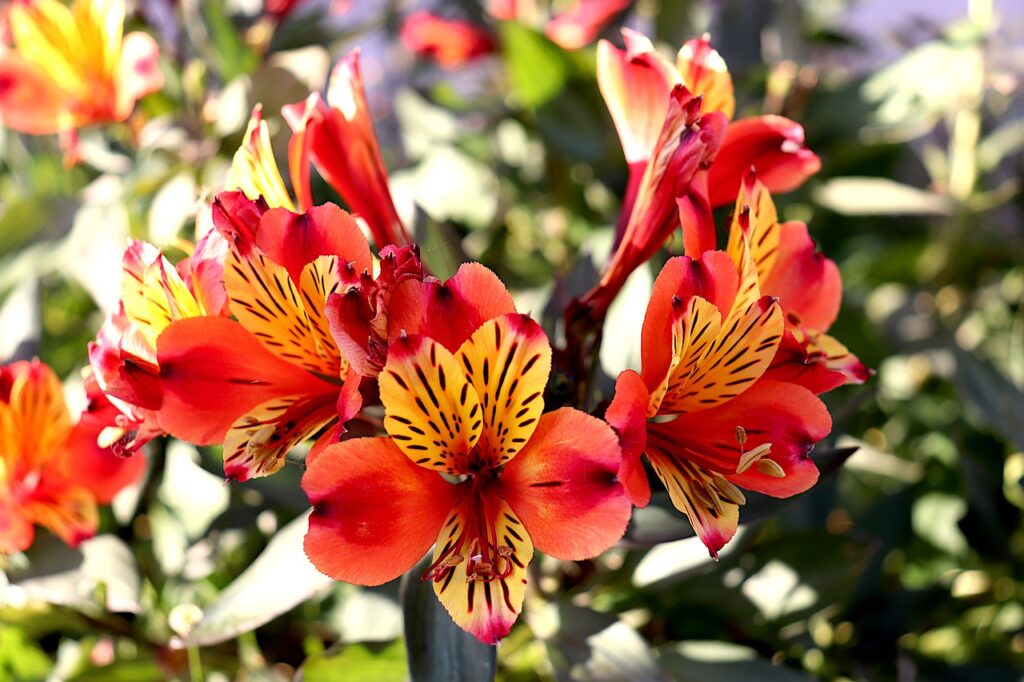
I. Introduction
Fascination with Floral Diversity
Flowers have captivated human imagination for centuries, inspiring art, literature, and cultural traditions. Their exquisite beauty, diverse forms, and vibrant colors continue to enchant and delight people around the world. In this exploration, we delve into the world of flowers starting with the letter “C”, uncovering their unique characteristics, cultural significance, and horticultural value.
Exploration of Flowers Starting with “C”
Among the vast array of floral species, those beginning with the letter “C” offer a rich tapestry of colors, shapes, and fragrances. From classic favorites like carnations to lesser-known gems like crocuses, each flower has its own story to tell and its own role to play in the botanical landscape.
Importance of Incorporating Unique Flowers in Gardens
Gardens serve as living canvases, showcasing the beauty and diversity of plant life. By incorporating unique flowers starting with the letter “C” into garden designs, enthusiasts can add depth, texture, and visual interest to their outdoor spaces. Additionally, these flowers contribute to ecosystem health by providing food and habitat for pollinators and other wildlife.
II. Carnations (Dianthus caryophyllus)
Description and Characteristics
Carnations, scientifically known as Dianthus caryophyllus, are beloved for their ruffled petals, spicy fragrance, and long-lasting blooms. Available in a wide range of colors, including pink, red, white, and bi-colors, carnations exhibit a variety of flower forms, from single to double, and exhibit a delicate, fringed appearance. Traditionally associated with love and admiration, carnations hold symbolic meanings in various cultures and occasions.
Cultivation Tips and Growing Conditions
To cultivate healthy carnations, it’s essential to provide well-drained soil with a slightly alkaline pH and ample sunlight. Water moderately, keeping the soil evenly moist but not waterlogged, and fertilize monthly during the growing season to promote vigorous growth and flowering. Prune faded flowers and yellowing foliage regularly to encourage continuous blooming and maintain plant health.
Creative Uses in Floral Arrangements and Symbolic Meanings
Carnations are prized for their versatility and longevity in floral arrangements, making them popular choices for weddings, Mother’s Day, and other special occasions. Whether used as focal points in bouquets or as filler flowers in corsages and boutonnieres, carnations add texture, color, and fragrance to any floral composition. Beyond their decorative appeal, carnations carry symbolic meanings of love, admiration, and affection, making them meaningful gifts for expressing heartfelt sentiments.
III. Cosmos (Cosmos bipinnatus)
Overview of Cosmos Flowers
Cosmos flowers, botanically known as Cosmos bipinnatus, are cheerful annuals prized for their daisy-like blooms and feathery foliage. Native to Mexico and Central America, cosmos flowers thrive in sunny locations with well-drained soil and exhibit a bushy, upright growth habit. Available in a spectrum of colors, including white, pink, and purple, cosmos flowers attract pollinators such as bees and butterflies, making them valuable additions to wildlife-friendly gardens.
Cultivation Techniques and Care Guidelines
To grow healthy cosmos plants, choose a sunny location with fertile, well-drained soil, and sow seeds directly into the ground after the threat of frost has passed. Water regularly to keep the soil evenly moist during the germination and establishment phases, then gradually reduce watering once plants are established. Deadhead spent flowers to prolong blooming and fertilize monthly with a balanced fertilizer to support continuous growth and flowering.
Landscape Design Ideas and Companion Planting
Cosmos flowers are versatile additions to garden landscapes, suitable for various design styles, from cottage gardens to formal borders. Plant cosmos in drifts or clusters for a naturalized look, or intersperse them with other annuals and perennials for a vibrant, mixed-border effect. Their airy foliage and delicate blooms create a romantic ambiance in garden settings and attract beneficial insects, making them ideal companions for vegetables and herbs in companion planting schemes.
IV. Chrysanthemums (Chrysanthemum spp.)
Characteristics of Chrysanthemum Flowers
Chrysanthemums, belonging to the genus Chrysanthemum, are renowned for their diverse flower forms, colors, and sizes. These versatile perennials can be classified into various categories based on flower structure, including daisy, pompon, spider, and decorative types. Cultivated for their showy blooms and long-lasting display, chrysanthemums hold cultural significance in many countries and are often associated with autumn festivals and celebrations.
Growing Chrysanthemums in the Garden
To cultivate healthy chrysanthemum plants, provide well-drained soil with ample sunlight and good air circulation. Plant rooted cuttings or nursery-grown plants in spring or fall, spacing them according to their mature size and growth habit. Water deeply and regularly, especially during dry periods, and pinch back growing tips to encourage branching and compact growth. Apply a balanced fertilizer monthly during the growing season to promote robust flowering and overall plant health.
Floral Arrangement Ideas and Festive Decorations
Chrysanthemums are prized for their versatility in floral arrangements and festive decorations, making them popular choices for fall harvest displays, seasonal centerpieces, and floral design competitions. Whether used as standalone blooms or combined with other seasonal favorites like pumpkins, gourds, and foliage, chrysanthemums add color, texture, and visual interest to any autumnal setting. Their long-lasting blooms and wide range of colors make them indispensable elements in fall-themed weddings, parties, and events.
V. Crocus (Crocus spp.)
Introduction to Crocus Flowers
Crocus flowers, members of the genus Crocus, herald the arrival of spring with their vibrant blooms and delicate beauty. These early-flowering bulbs emerge from the ground in late winter to early spring, often pushing through snow-covered landscapes to unfurl their petals in a display of color and resilience. Native to Europe, North Africa, and Asia, crocuses are treasured for their ability to thrive in challenging conditions and brighten the garden after the long winter months.
Growing Crocuses in Home Gardens
To cultivate crocuses successfully, plant bulbs in well-drained soil enriched with organic matter and located in a sunny to partially shaded area of the garden. Plant bulbs in the fall, spacing them several inches apart and planting them at a depth equal to three times their diameter. Water bulbs thoroughly after planting to settle the soil and provide a protective layer of mulch to insulate them from temperature fluctuations. Crocuses are low-maintenance plants that require minimal care once established, making them ideal for beginner gardeners and seasoned enthusiasts alike.
Symbolic Meanings and Cultural Associations
Crocus flowers hold symbolic meanings and cultural associations in various societies, often representing themes of rebirth, renewal, and hope. In ancient Greek mythology, crocuses were associated with the youth and beauty of the god Hermes and were believed to mark the arrival of spring. In Persian culture, crocuses are revered for their medicinal properties and are used in traditional herbal remedies and perfumery. In art and literature, crocuses have inspired countless works of creativity and imagination, serving as motifs of beauty and transience in the natural world.




